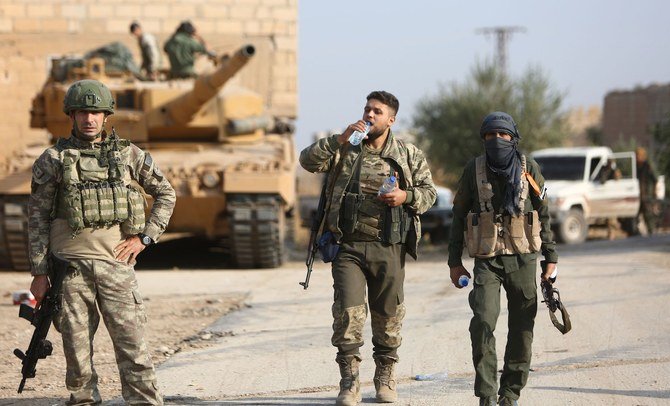
- ARAB NEWS
- 12 Jul 2025

The military operation dubbed “Peace Spring,” launched by Turkey in order to secure its southern border against possible Kurdish harassment, completed its third week with some skirmishes but without a major confrontation.
Turkey did the right thing by not insisting on its initial unrealistic demand of setting up a 440-kilometer-long and 30-kilometer-wide safe zone along the Syrian border to be controlled exclusively by the Turkish army. It has now agreed to a shorter corridor of 120 kilometers and a narrower band of 10 kilometers. Further to that, this band will not be patrolled by Turkish soldiers alone, but jointly with Russian troops.
US President Donald Trump said that America had “secured the oil.” And by withdrawing the Kurdish People’s Protection Units (YPG) fighters further south into Syrian territory, he may have killed three birds with one stone. One is the fulfillment of his promise to Recep Tayyip Erdogan, allowing Turkey to set up a safe zone in the northeast of Syria.
Second is preventing a military clash between the Turkish army and YPG fighters, hence avoiding casualties on both sides. Third is securing the oil wells. If the US insists on allocating oil revenues to the Kurds, Turkey will have to fight to avoid that happening; hence it will go to Ankara’s arch-enemy Bashar Assad — the lesser of two bad options.
At the end of the day, Turkey may have pushed the Kurdish fighters to an area where they can better flourish under joint US-Russian protection and with oil money.
It is unclear whether the US has suspended the supply of arms, equipment and ammunition pending the outcome of the bargaining between the Syrian government and the Syrian Democratic Forces (SDF), whose backbone is composed of the Kurdish fighters of the YPG. If the negotiations between the Syrian government and the SDF are concluded to Washington’s satisfaction, the supply of arms and ammunition to Kurds is likely to continue as before.
But it is difficult to tell what Washington would do if Damascus and the SDF reached an accommodation that the US does not like. The Kurds were the strongest leverage the US was planning to use on the Syrian government during the constitutional process and this leverage may now be lost.
As an unintended consequence of Turkey’s military operation, the Syrian government has been able to extend its control to areas close to the Turkish border. Based on both this stronger position and the US betrayal of the Kurds, Damascus proposed the integration of YPG fighters into the Syrian army and members of the Kurdish internal security services, known as Asayish, into local police forces.
The Kurds were the strongest leverage the US was planning to use on the Syrian government during the constitutional process and this leverage may now be lost.
Yasar Yakis
The SDF, probably counting on continued US support, turned down the proposal. It wants to maintain the main components of the de facto cantonal autonomy that it already enjoys. Its decentralized model of local administration is supported both by the US and Russia.
Turkey is opposed to any form of promotion of Kurdish identity, including the devolution of municipal competences. Here again, Ankara’s interests converge with those of Damascus, which prefers to maintain the unitary character of Syria, but Turkey refrains from showing enthusiasm for full cooperation.
The Kurds’ allegiance may hover, for a while, between Washington and Moscow. It may settle down somewhere between the strong Russian presence in Syria and the US’ need to have a friendly Kurdish state in the region for Israel’s security. Alternatively, the Kurds might have the difficult task of choosing between its two suitors, but this has the inherent risk of antagonizing at least one of them.
Ultimately, Washington and Moscow may also reach a modus vivendi that will accommodate the support of both of them for the Kurdish cause. As Turkish journalist Fehim Tastekin wrote recently, Washington and Moscow have chosen Syria to test whether they can work together.
This would be one of the worst scenarios that Turkey could face. The first sign of such a risk is that the US, when it withdrew its soldiers from Manbij and Kobane, handed over the control of these two cities to Russia and not to Turkey, despite Ankara’s insistent demands over many years.
There is one other player that is not taken into account in this equation: Iran. Its more accurate knowledge of the terrain, coupled with the strong Russian military presence and Syrian government’s legitimate sovereign rights over its own territory, may prevail in the longer run over Washington’s patchy Syria policy.
In light of this complicated scenario, Turkey needs to work out a comprehensive and realistic Syria policy. If it fails to do this, it may find itself further bogged down in the Syrian imbroglio.
Yasar Yakis is a former foreign minister of Turkey and founding member of the ruling AK Party. Twitter: @yakis_yasar